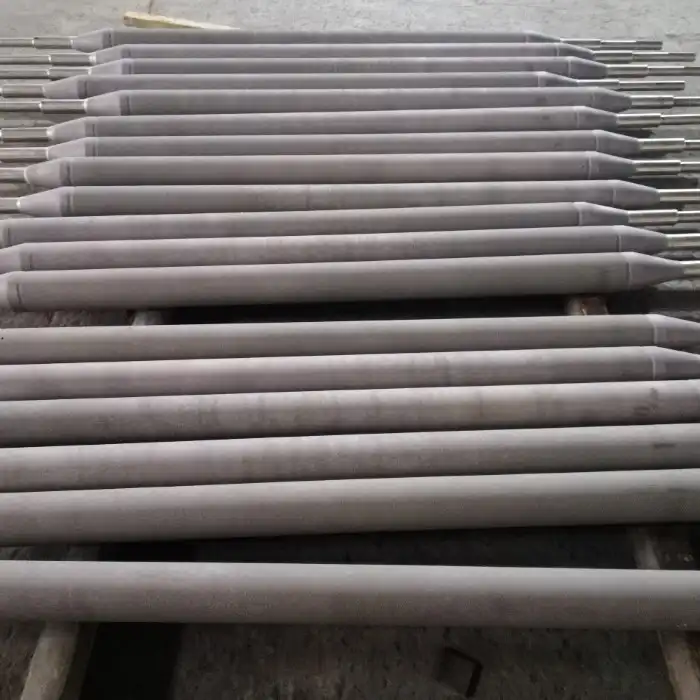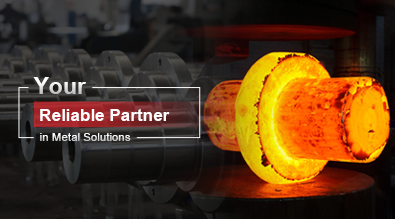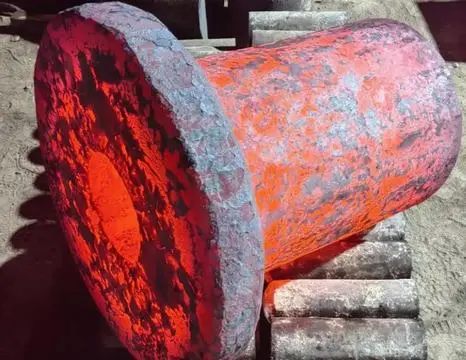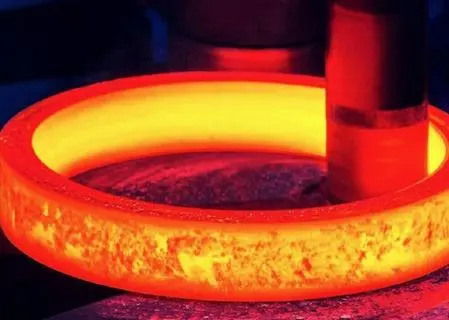Identifying Common Furnace Roll Issues
Wear and Degradation
One of the most prevalent issues with furnace rolls is wear and degradation. The furnace roll is constantly exposed to high temperatures, mechanical stress, and sometimes aggressive environments, which collectively contribute to material deterioration. Over time, the roll's surface can show significant signs of wear, resulting in reduced performance, inefficiency, and in some cases, premature failure. The impact of high-temperature oxidation, thermal cycling, and chemical interactions with molten metals or other materials leads to gradual deterioration of the roll's surface, compromising its structural integrity.
Surface roughness is one of the first indicators of wear. As the material undergoes constant friction and thermal stress, it becomes less smooth, causing increased resistance against the materials being processed. The roughened surface further accelerates wear, as it leads to more friction during each cycle. This roughness can be problematic, especially in processes where smoothness and precision are critical to achieving high-quality products. If unchecked, the accumulation of surface roughness can degrade the quality of the materials being processed and negatively impact production efficiency.
Thermal Fatigue
Thermal fatigue is another common problem that affects furnace rolls. The roll is subjected to frequent temperature changes due to the heating and cooling cycles during furnace operation. As the roll heats up, the material expands, and when it cools, it contracts. These continual cycles of thermal expansion and contraction subject the roll to significant stresses, causing strain on the material and potentially leading to the formation of cracks or distortions in the roll structure. The constant thermal cycling leads to a phenomenon known as "thermal fatigue," which, over time, weakens the material's ability to withstand these stresses and reduces the roll's overall lifespan.
Thermal fatigue is particularly problematic in processes that involve rapid temperature fluctuations. For example, in applications like continuous casting or hot rolling, the furnace rolls are rapidly exposed to high temperatures and then cooled quickly. This abrupt temperature change creates a thermal gradient, with the outer layers of the roll expanding more quickly than the inner layers. The difference in expansion rates creates thermal stresses that may lead to the formation of microcracks. These cracks can eventually grow, compromising the structural integrity of the roll, and leading to complete failure if not monitored carefully.
Misalignment and Imbalance
Furnace rolls that are not properly aligned or balanced can experience uneven wear, vibration, and reduced performance. Misalignment can occur due to improper installation, settling of support structures, or thermal expansion. Regular alignment checks and adjustments are crucial to maintain optimal roll performance and prevent premature failure.
Troubleshooting Techniques for Furnace Rolls
Visual Inspection and Non-Destructive Testing
Regular visual inspections are the first line of defense in identifying furnace roll issues. Trained personnel should carefully examine the roll surface for signs of wear, cracks, or other abnormalities. Non-destructive testing methods, such as ultrasonic testing or magnetic particle inspection, can be employed to detect internal defects or surface imperfections that may not be visible to the naked eye. These techniques help in early detection of potential problems, allowing for timely maintenance or replacement.
Temperature Monitoring and Control
Implementing an effective temperature monitoring and control system is crucial for troubleshooting furnace roll issues. Installing thermocouples or infrared sensors at strategic locations can provide real-time temperature data, allowing operators to identify hot spots or uneven heating. By maintaining consistent temperature profiles across the furnace roll, thermal stresses can be minimized, reducing the risk of thermal fatigue and related problems.
Lubrication System Maintenance
Proper lubrication is essential for the smooth operation of furnace rolls and associated components. Regular inspection and maintenance of the lubrication system can prevent issues related to bearing failure or excessive friction. Ensure that lubricants are appropriate for the operating temperatures and conditions, and follow manufacturer-recommended lubrication schedules. Implementing automated lubrication systems can help maintain consistent lubrication and reduce the risk of human error.
Preventive Measures and Long-Term Solutions
Material Selection and Surface Treatments
Choosing the right materials for furnace roll construction is crucial for long-term reliability. High-temperature alloys, such as heat-resistant stainless steels or nickel-based superalloys, offer excellent resistance to thermal fatigue and corrosion. Additionally, surface treatments like thermal spraying or ceramic coatings can enhance the roll's wear resistance and thermal properties, extending its service life in demanding environments.
Predictive Maintenance Strategies
Implementing predictive maintenance strategies can significantly improve furnace roll reliability and reduce unexpected downtime. Utilize condition monitoring techniques, such as vibration analysis or oil analysis, to detect potential issues before they escalate into major problems. By analyzing historical data and trends, maintenance teams can schedule interventions proactively, optimizing resource allocation and minimizing production disruptions.
Continuous Improvement and Training
Fostering a culture of continuous improvement and providing ongoing training for operators and maintenance personnel is essential for effective furnace roll troubleshooting. Encourage knowledge sharing and documentation of best practices within the organization. Regular training sessions on proper equipment handling, troubleshooting techniques, and safety protocols can empower employees to identify and address issues more efficiently.
In conclusion, troubleshooting common issues with furnace rolls requires a comprehensive approach that combines regular inspections, advanced monitoring techniques, and proactive maintenance strategies. By implementing these practices and staying vigilant for potential problems, industrial facilities can optimize the performance and longevity of their furnace roll systems. For expert guidance on furnace roll selection, maintenance, and troubleshooting, please don't hesitate to contact us at info@welongpost.com. Our team of experienced professionals is ready to assist you in maximizing the efficiency and reliability of your industrial processes.




